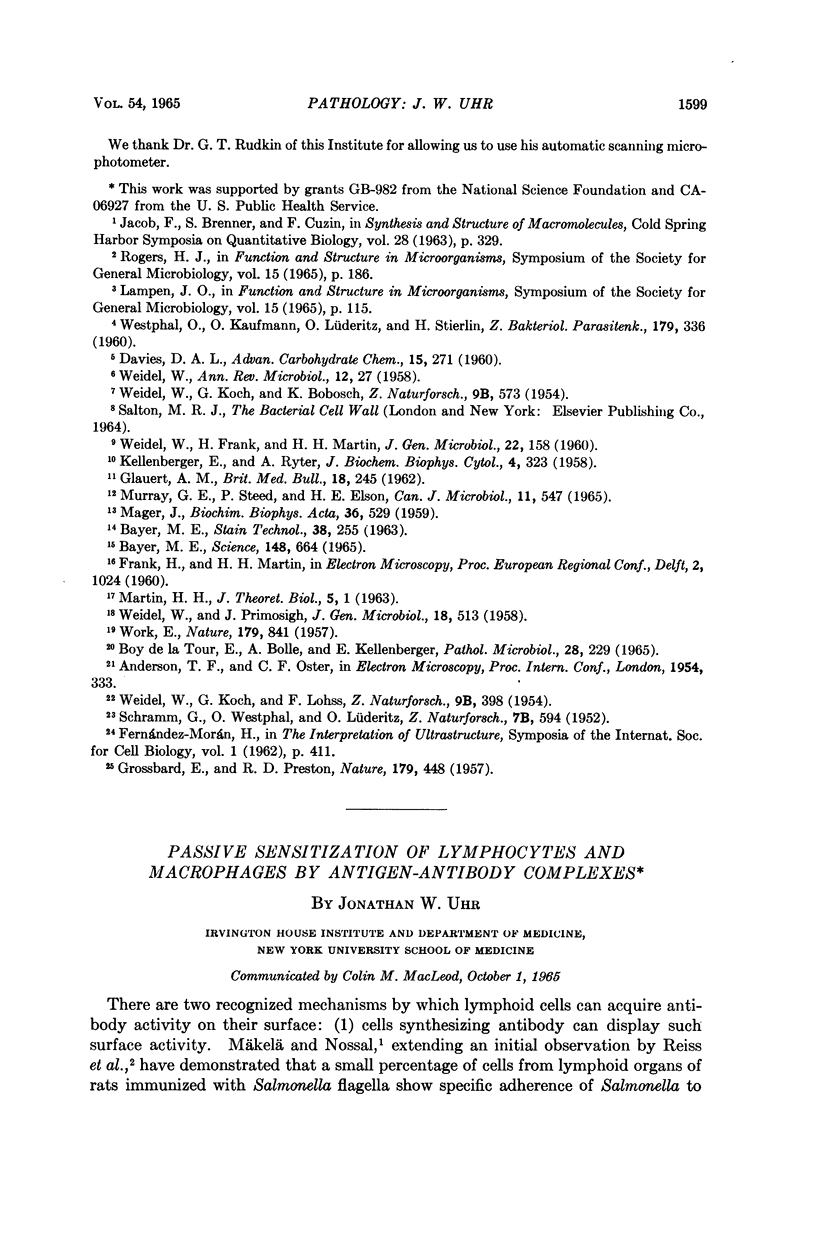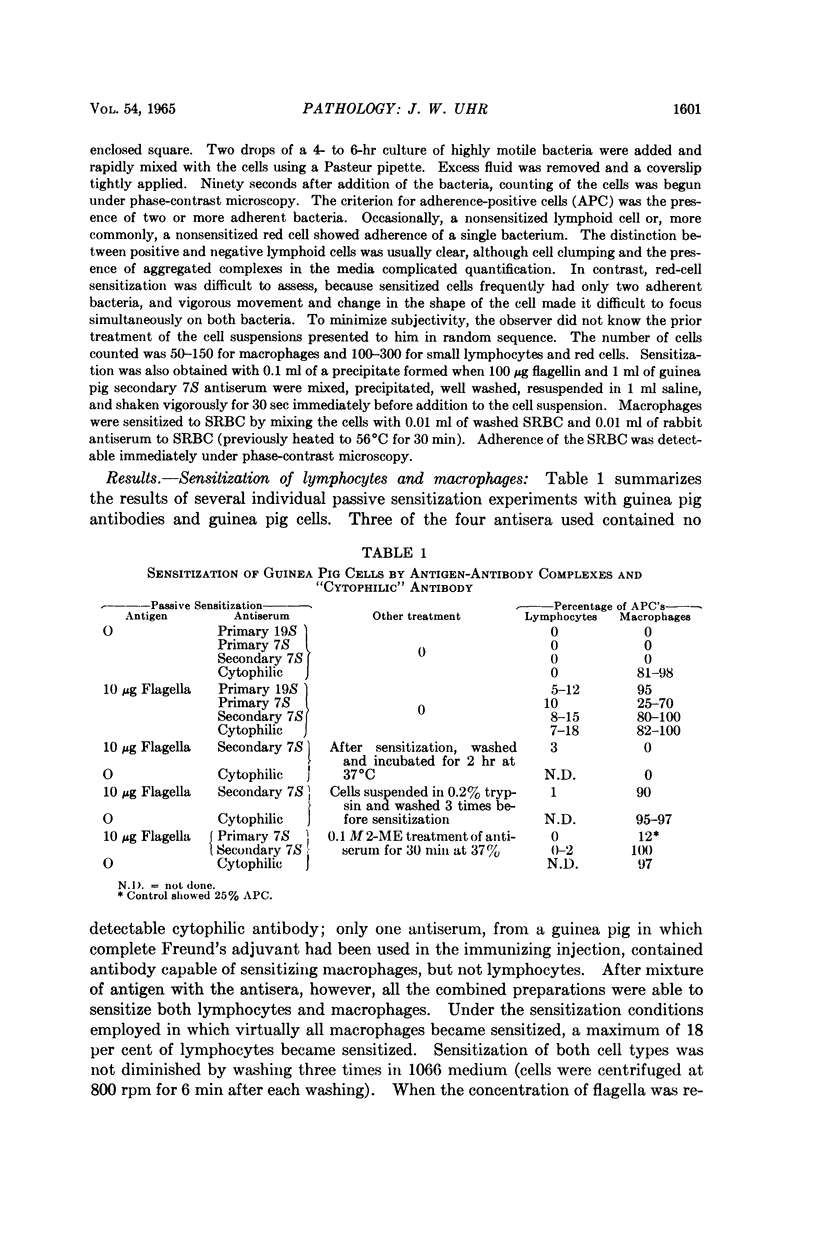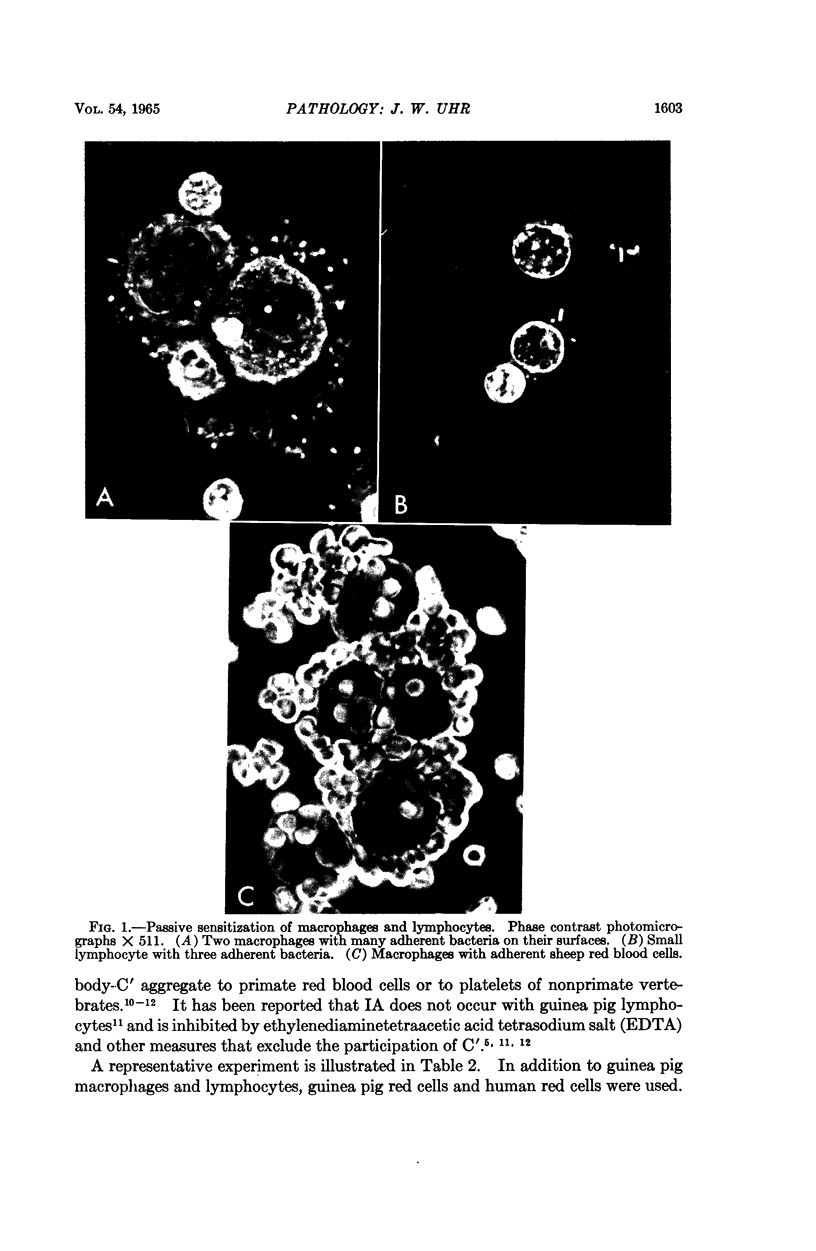Full text
PDF







Images in this article
Selected References
These references are in PubMed. This may not be the complete list of references from this article.
- ADA G. L., NOSSAL G. J., PYE J., ABBOT A. ANTIGENS IN IMMUNITY. I. PREPARATION AND PROPERTIES OF FLAGELLAR ANTIGENS FROM SALMONELLA ADELAIDE. Aust J Exp Biol Med Sci. 1964 Jun;42:267–282. [PubMed] [Google Scholar]
- BOYDEN S. V. CYTOPHILIC ANTIBODY IN GUINEA-PIGS WITH DELAYED-TYPE HYPERSENSITIVITY. Immunology. 1964 Jul;7:474–483. [PMC free article] [PubMed] [Google Scholar]
- EDELMAN G. M., KUNKEL H. G., FRANKLIN E. C. Interaction of the rheumatoid factor with antigen-antibody complexes and aggregated gamma globulin. J Exp Med. 1958 Jul 1;108(1):105–120. doi: 10.1084/jem.108.1.105. [DOI] [PMC free article] [PubMed] [Google Scholar]
- Henney C. S., Stanworth D. R., Gell P. G. Demonstration of the exposure of new antigenic determinants following antigen-antibody combination. Nature. 1965 Mar 13;205(976):1079–1081. doi: 10.1038/2051079a0. [DOI] [PubMed] [Google Scholar]
- ISHIZAKA K., CAMPBELL D. H. Biologic activity of soluble antigen-antibody complexes. V. Change of optical rotation by the formation of skin reactive complexes. J Immunol. 1959 Sep;83:318–326. [PubMed] [Google Scholar]
- MAKELA O., NOSSAL G. J. Bacterial adherence: a method for detecting antibody production by single cells. J Immunol. 1961 Oct;87:447–456. [PubMed] [Google Scholar]
- MAURER P. H., TALMAGE D. W. The effect of the presence of complement in rabbit serum on the quantitative precipitin reaction. II. Effect on antigen and antibody precipitation. J Immunol. 1953 May;70(5):435–440. [PubMed] [Google Scholar]
- NELSON D. S., NELSON R. A., Jr On the mechanism of immune-adherence. I. Differentiation from acid-adhesion of bacteria to erythrocytes. Yale J Biol Med. 1959 Feb;31(4):185–200. [PMC free article] [PubMed] [Google Scholar]
- NELSON R. A., Jr The immune-adherence phenomenon; an immunologically specific reaction between microorganisms and erythrocytes leading to enhanced phagocytosis. Science. 1953 Dec 18;118(3077):733–737. doi: 10.1126/science.118.3077.733. [DOI] [PubMed] [Google Scholar]
- NISONOFF A., WISSLER F. C., LIPMAN L. N., WOERNLEY D. L. Separation of univalent fragments from the bivalent rabbit antibody molecule by reduction of disulfide bonds. Arch Biochem Biophys. 1960 Aug;89:230–244. doi: 10.1016/0003-9861(60)90049-7. [DOI] [PubMed] [Google Scholar]
- REISS E., MERTENS E., EHRICH W. E. Agglutination of bacteria by lymphoid cell in vitro. Proc Soc Exp Biol Med. 1950 Aug;74(4):732–735. doi: 10.3181/00379727-74-18030. [DOI] [PubMed] [Google Scholar]
- WEIGLE W. O., MAURER P. H. The effect of complements on soluble antigen-antibody complexes. J Immunol. 1957 Sep;79(3):211–222. [PubMed] [Google Scholar]
- WIEDERMANN G., MIESCHER P. A., FRANKLIN E. C. Effect of mercaptoethanol on complement binding ability of human 7 S gammaglobulin. Proc Soc Exp Biol Med. 1963 Jul;113:609–613. doi: 10.3181/00379727-113-28440. [DOI] [PubMed] [Google Scholar]



